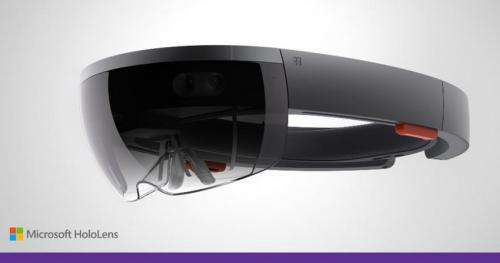May 5, 2016 weblog
Microsoft Research works to improve VR headset field of view

"Augmenting the Field-of-View of Head-Mounted Displays with Sparse Peripheral Displays" is the title of a video from Microsoft Research that shows interesting work in virtual reality headsets.
Senior News Editor Vlad Dudau in Neowin recognized the researchers' approach might impact the problem of motion sickness. "One of the big problems of virtual reality headsets is that they can easily induce nausea in people," he said, and this could hamper the rate of adoption in VR headsets.
A limited field of vision (FOV) is a major culprit but not the only one, said Dudau. "Combined with occasional frame rate decreases, lens quality and so on, that can easily lead to nausea."
Dudau said the approach being proposed by Microsoft Research "seems to work well in early prototypes." They are using a number of inexpensive LEDs inside of a VR headset.
Robert Xiao, Carnegie Mellon University, and Hrvoje Benko, Microsoft Research, are named in the video as the researchers behind this approach.
The video presenter said that "most head mounted virtual reality displays have a horizontal field of view of around 100 degrees, which pales in comparison to the human visual field, of more than 180 degrees. This makes the VR experience more akin to looking through binoculars—limiting the sense of presence in the virtual scene."
This is where the Microsoft Research team stepped up to the plate. "We present the concept of sparse peripheral displays—augmenting the field of view with low resolution, low weight inexpensively produced array of LEDs around the central high-resolution display."
They explained the VR prototype SparseLightVR as a device which expands the horizontal field of view with 112 peripheral LEDs creating a 190 degree horizontal field of view.
Their approach increases situational awareness of the person wearing the display. Paul Lilly writing in Hot Hardware said, "the LEDs change color to match the surroundings as you look around. This inexpensive solution simulates peripheral vision so that you feel more immersed in the virtual world. In combination with something called peripheral countervection motion, which creates a motion effect in the peripheral opposing any motion that does not directly originate from the headset wearer's head motion, Microsoft says nausea is less likely to occur."
Testing it out, they ran two experiments and reported results. "Our findings show that sparse peripheral displays are useful in conveying peripheral information and improving situational awareness, are generally preferred, and can help reduce motion sickness in nausea-susceptible people."
Neowin's Dudau said that "the pixels act to send users a bit of information regarding their surroundings: there might be a wall on the left; there's a light or an object near you, etc. This is exactly what peripheral vision does in real life, albeit to a much higher degree of precision and responsiveness. But, according to Microsoft researchers, even this limited implementation proved to keep users more engaged in the virtual world and delay the onset of nausea or other unpleasant side-effects from using VR headsets.
© 2016 Tech Xplore




















